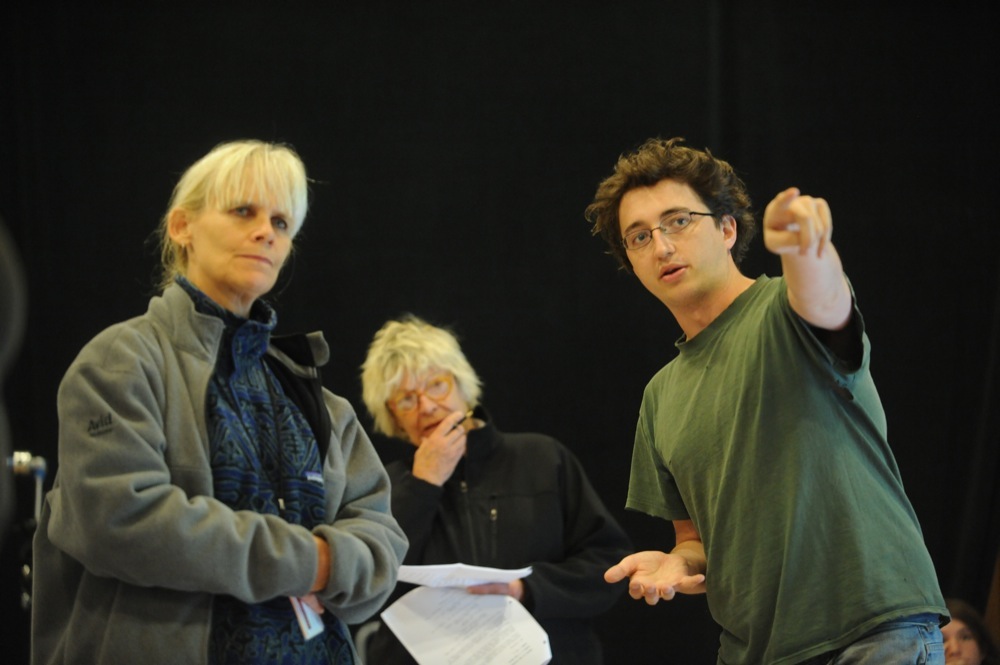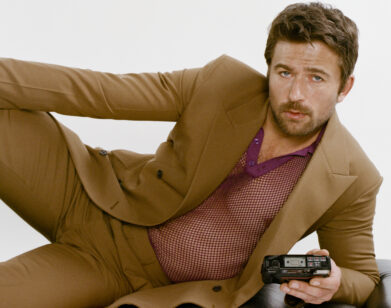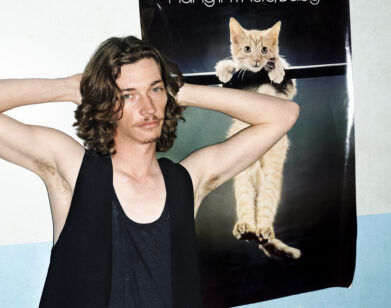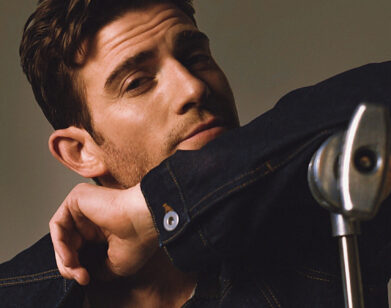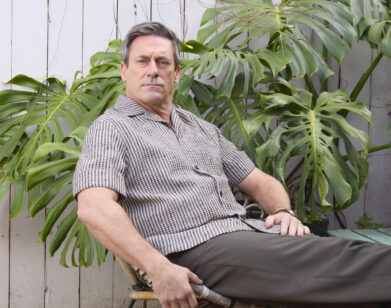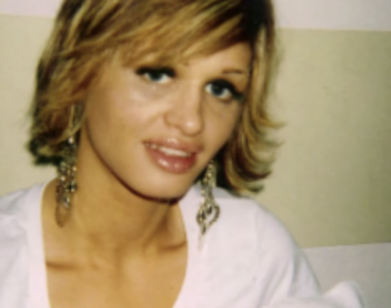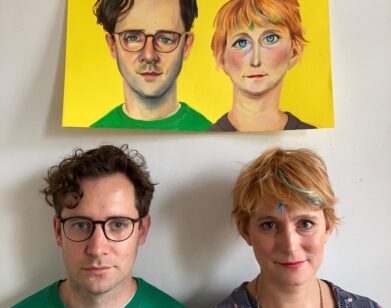Sundance’s Mentor-in-Residence
Over the last three-odd decades, Michelle Satter has mentored some of the U.S.’s most famous directors and screenwriters. She’s received a special thanks in the credits of Reservoir Dogs, Boogie Nights, Requiem for a Dream, Hedwig and the Angry Inch, Raising Victor Vargas, Mysterious Skin, Me and You and Everyone We Know, Half Nelson, Beasts of the Southern Wild, and Hellion, among many others. As a film fan, you might not know her name, but if you’re a filmmaker, you certainly do.
The reason is simple: for the past 34 years, Satter has worked at the Sundance Institute. As the founding director of the Institute’s Feature Film Program, she oversees many of the Institute’s 24 residency labs, both in the U.S. and around the world in countries like Jordan, India, Turkey, and Japan. She also helps distribute over 400,000 annual grants to filmmakers.
Each June, Satter migrates to the Sundance Resort in Park City, Utah, for the Directors, Screenwriters, and Creative Producing Labs. Over the course of several weeks, a select group of aspiring filmmaking fellows workshop fiction features (first features for the Directors Lab and first or second features for the Screenwriters Lab) with industry veterans such as Alfonso Cuarón, Sigourney Weaver, John Ridley, Caleb Deschanel, Denzel Washington, Naomi Foner, Nicole Holofcener, Kathryn Bigelow, and Scott Z. Burns. Many of the fellows go on to premiere their films at the Sundance Film Festival: Marielle Heller worked on The Diary of a Teenage Girl, which screened at the festival last January, during the 2012 Directors Lab; Sean Durkin’s Martha Marcy May Marlene, which won the Directing Award at Sundance in 2011, went through the 2010 Directors Lab; and Beasts of the Southern Wild, which won the Grand Jury and Cinematography Prizes and went on to receive four Oscar nominations, was Behn Zeitlin’s project at the 2009 Directors Lab.
Here, Satter talks to her friend and former fellow writer-director Cary Fukunaga.
MICHELLE SATTER: Hey Cary.
CARY FUKUNAGA: Hey Michelle. How are you?
SATTER: I’m good. I’m in the thick of the June lab.
FUKUNAGA: Are you standing on top of a mountain to get a phone signal?
SATTER: I found a landline. I was walking up the mountain to get to my room and I was thinking about you. I would love for you to come as a creative advisor next year if you’re available. Or any year.
FUKUNAGA: You know I want to come. I felt like up until this last project, I didn’t have enough to offer. But now that I’ve got a couple of films under my belt, maybe I have something to offer.
SATTER: You are ready.
FUKUNAGA: Next summer it will be 10 years ago that I was there.
SATTER: I was thinking back to when you were here, and it’s quite vivid—especially the scene on the top of the train [in Sin Nombre]. I would love to hear from you what you discovered here. I know you worked a lot with Gyula Gazdag, and you worked with Robert Elswit, the master DP who was here…
FUKUNAGA: Aren’t I supposed to be interviewing you? Classic you, deflecting the question. You’ve been with the Institute now 34 years, right?
SATTER: I have.
FUKUNAGA: That’s already a feat. People don’t stay in relationships that long. If you had to reduce to a simple idea how and why you’ve been there for so long, could you talk about that?
SATTER: There are a number of reasons, but the starting point for me is that I love being in a creative space, and I think Sundance Institute really defines that sense of creativity. I also love the idea that failure is just a step forward in the process—the underpinnings of Sundance are the values that I care deeply about. Another part is generosity, and I’m struck by that all the time. Redford started the Institute from a place of wanting to give back to a new generation of storytellers. The sense of place is also really important and resonates for me—that combination of being in a place that is safe for artists to take risks, and when you’re getting stressed, taking walk in one of the most beautiful places on the earth. And it’s fun. I take the work seriously, but I laugh more at Sundance and I have more fun and more joy in my life than I can imagine any place else.
FUKUNAGA: It always seems like, whether it’s the writing lab in the winter or the directing lab in the summer, there’s some element of therapeutic change that takes place at these labs. I feel like the advisors as much as the students take part in that.
SATTER: Reinvigoration. I hear from advisors and fellows coming out of the lab that it’s transformative. For advisors, being around other advisors and seeing the next generation of filmmakers working with such a commitment and freshness connects them with why they wanted to tell stories and early on in their careers. Everybody learns here. Everybody has their own individual contribution to make, but it’s also collective. It’s a team effort, and people crave community.
FUKUNAGA: For me, at least, that was something that I saw there. Especially for young filmmakers, to go to a place where you meet professionals who are struggling with some of the same fears and issues as you are is pretty big. How has the lab changed over the last 34 years? Have you seen a difference in the kind of art being made and the kind of creators?
SATTER: We really work hard to create a safe and protected space for filmmakers to work and that hasn’t changed. The mission of the lab hasn’t changed. This year we have several more filmmakers who are coming from a non-fiction world and are terrified of working with actors. It’s been interesting to help them find, not only their voice here, but also a language and a way to communicate with actors. For some of them, it’s really finding a visual style for their work; for others, they have pivotal scenes that aren’t yet working in the script and it’s a time to really do the deep work into character. In terms of the work that’s going on here, that actually hasn’t changed that much either. One of the things that has changed is the year-round focus of supporting a filmmaker. Once we select a filmmaker for the lab, we really are in it for the lifecycle of the project, and that has made an incredible difference, not only in films getting made, but also films getting made that realize the original promise of the script that we read. We’re also looking at storytelling in a bigger way; looking at episodic story telling, at what we call “New Frontier,” which is about how technology and story-telling are converging.
FUKUNAGA: Some of the directors that have come through the lab who people are maybe more familiar with are Paul Thomas Anderson, Quentin Tarantino, Darren Aronofsky. Can you describe your relationship with them and how you first met them?
SATTER: Starting with Paul, I met him when he showed his short film at the festival, Cigarettes & Coffee (1993). He was about 21 at the time, and I loved the short. I was looking for him in the same way I think that I was looking for you having seen your terrific short Victoria para chino (2004). With Paul T. Anderson, he was in some ways the same director as he is now in terms of what I was getting from him—this intensity. A passion for cinema. He was really interested in the labs because he saw that as a place for him to move forward with his first feature. We became close because I just loved working with him—his enthusiasm for the work, his love of working with actors. He has such a great visual storytelling style. I loved being on his set. Advisors would be on other sets, but somehow a lot of them would converge on his set. Not only would you learn from him in terms of pure instinct, but it was just so much fun. I think Quentin Tarantino, same thing. He had such an incredible energy and passion and intensity and knowledge, but a knowledge that wasn’t only about artistic films. He was really a great fan, and had a sense of fun about it. He was incredible to support at the lab for the same reason. With Darren Aronofsky, he came to our writers’ lab, and I remember him saying it was very hard for him to go from Pi to Requiem for a Dream. Everybody wanted him to do other movies and this was the film that he wanted to do next, but he knew the script needed more work, especially in the third act. Again, [he has an] intensity and focus, but he’s much more cerebral than the other directors.
FUKUNAGA: For Quentin and Paul, who are both really idiosyncratic directors, did they listen to the advice of the advisors? Or did they always follow the beat of their own drum?
SATTER: They did both. You want the directors to rely on their instincts and gain confidence. They gravitated to different advisors; I know with Quentin, he connected with Terry Gilliam and Volker Schlöndorff. For Paul, he connected with some of the screenwriters in a very strong way: Scott Frank, Richard LaGravenese, Todd Graff. But we don’t want our directors to be such an open book that everything is “yes” to the advisors. They really need to have their own vision. What they’re learning here is tools, and getting experience and finding out the work they still need to do.
FUKUNAGA: In terms of your background, what did you do in cinema before this?
SATTER: I actually didn’t grow up watching movies. My dad was a visual artist. I grew up around art. I felt like I lived in a gallery —art, art books. I studied dance and that, for me, was my purest form of expression. I grew up in New Jersey close to New York, so there were many family trips to MoMA and The Met and the theater and dance performances. Film came a little bit later. I was living in Boston—I went to school in Boston—near the Orson Welles cinema, which was in Cambridge. They were playing what was called the Janus film collection, which has become the Criterion Collection. So it was all the world masters, all the great foreign directors—Godard, Truffaut, Fellini, Bergman, Antonioni. I would go there most afternoons and I would see a double feature. I fell in love with film and story and the immersion of being in somebody else’s world. I was thinking about the first film that had a big impact on my, and I thought of Cabaret, directed by Bob Fosse. My father was a painter and an artist, and I connected to him through watching him work. I think that had a big impact on my work at Sundance, that connection to the creative process by watching an artist work. My father was not a very verbal man, so it was deeply meaningful to me. My mother is from Prague; she’s a Holocaust survivor, so Cabaret had this profound impact on me—that cry of despair that the film held for me. The idea of the rise of the Nazi party and you can feel it at every moment. It was such an immersive experience, and some of the dance part of it—it was theatrical and stylized. After college, I started a non-profit organization to produce performing arts with two friends. We didn’t know much what we were doing, but it was an incredible opportunity to produce dance, music, and theater. I loved it, but I wanted something permanent in terms of an art form and I gravitated to film. I worked for a moment at the Institute of Contemporary Art in Boston and then Sundance came along. I’ve never looked back.
FUKUNAGA: Sundance has the whole theater and composition side of it as well, doesn’t it?
SATTER: Yes, we do. In fact a play that we developed—the musical Fun Home—just won Best Musical at the Tony Awards, which is really exciting.
FUKUNAGA: Yes. I’ve seen that one. That one’s great. I now use the Bechdel test—all my future projects, I hope will pass the Bechdel test.
SATTER: Good for you.
FUKUNAGA: Naomi was telling me that she had been to the Middle Eastern [Sundance] Lab recently, and one thing she had noticed was a darker perspective on the world and where we’re headed in the world. I was kind of asking you about this earlier, if you feel like the stories or the story tellers have changed over the last 34 years, because you have a very close relationship with all of your lab fellows, and you know where they’re coming from not just in terms of their first film, but what they aspire to. Have you noticed that change around the world? Or a change in terms of different parts of the world being interested in different stories?
SATTER: The world has changed. It feels more dangerous now, and part of what interests Sundance is this idea that filmmakers have the opportunity to bear witness to that world. At least with the filmmakers that we’re selecting, we’re looking at stories that have a sense of urgency, that are timely. I don’t know if “darker” is the right word, but you can feel a sense of hopelessness—it’s a difficult time and it’s reflected in the work. There are more apocalyptic stories than I’ve ever read. You can feel that sense of uncertainty and friction in the work. What I do love, is I feel like American filmmakers are much more interested in looking up and seeing what’s going on and really responding to it. For the rest of the world, politics is not a backdrop; it’s the world that they live in and it’s in the work and the stories they’re telling.
FUKUNAGA: And that’s not a reflection on what you’re choosing, that’s a reflection on what’s being generated in terms of material and stories?
SATTER: I think it’s both—what people want to write about and the stories they want to tell. Filmmakers want to have an impact, and find the human stories within a world that is changing quite quickly, where politics is much more embedded. Maybe that’s where the change is in terms of American filmmakers, certain issues that are in the forefront: race relations, inequality, the issue of immigration and what that means. It’s all bubbling right now.
FUKUNAGA: I remember in my year in the directing lab, we had a pretty diverse group of people with really different styles of making film: Jake Mahaffy, So Yong Kim, Victoria Mahoney. It’s always great to see that diversity even within the domestic.
SATTER: Absolutely, and that’s by design. There’s a lot of conversation around diversity and I feel like the voices are out there and Sundance can amplify those voices—give a microphone to those voices—by supporting those stories.
FUKUNAGA: If you were ever to leave the institute, how do you think it would change? I think it would change a lot, but I was going to ask your opinion first.
SATTER: I don’t think about that. [laughs] The feature film program team are so strong and so committed to everything that I’m committed to. It will be different people, but I think it will continue to thrive.
FUKUNAGA: I always think back to—I think it was towards the end of the summer programs around the composing or producers lab—your youngest son had gone up the mountain to go mountain biking, and he hadn’t arrived at the time he said he was going to arrive by. I was walking with you, and I saw you looking up the mountain so anxiously waiting for him to come down, which he did. But I feel like I’ve seen you now before premieres of your lab fellows and at award ceremonies with that same quiet anticipation of what’s going to happen to them. Clearly, you care very deeply about all these people who come through the lab, so that’s the part that I feel like would be missing if you were to leave. That maternal warmth is what gives everyone the security to be vulnerable at the writing lab, and build upon that in the directing lab and going off into making the movies. I feel like that’s the magic of the time.
CARY FUKUNAGA IS EMMY AWARD-WINNING DIRECTOR, SCREENWRITER, AND PRODUCER WHOSE RECENT CREDITS INCLUDE THE FIRST SEASON ON HBO’S TRUE DETECTIVE AND JANE EYRE. HIS NEXT FILM IS BEASTS OF NO NATION, STARRING IDRIS ELBA. FOR MORE ON THE SUNDANCE INSTITUTE’S LAB PROGRAMS, VISIT THEIR WEBSITE.

